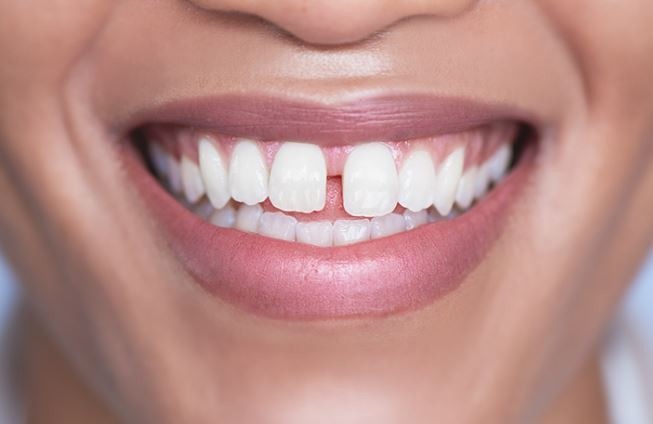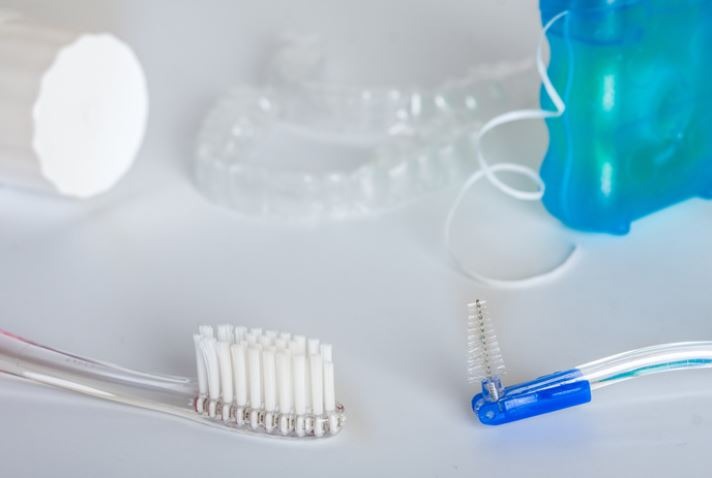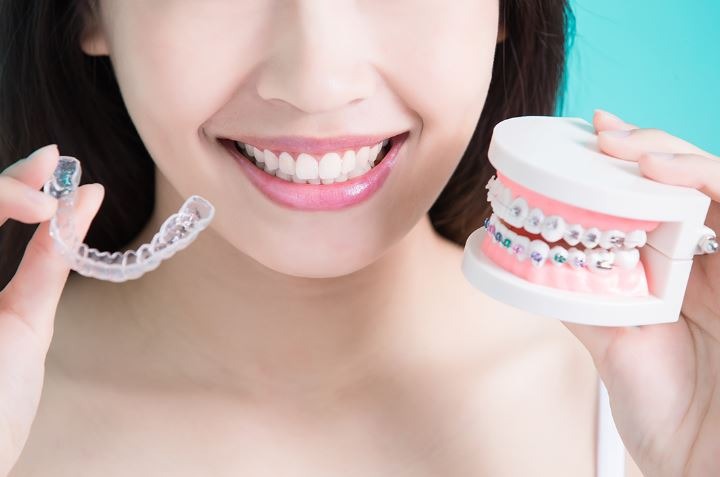Teeth Straightening Options for Adults

Teeth straightening has come a long way within the past few decades. It’s never too late to start straightening your smile. Plus, there are plenty of ways to straighten your teeth nowadays. Here are the 3 basic ways you can straighten your smile:
- Braces for complex tooth movements
- Dentist -supervised clear aligners (like Invisalign ®) for moderate tooth movement
- At-home clear aligners (like Smile Direct Club™ ) for simple tooth movements
The type of orthodontic treatment that’s best suited to your needs depends on how much tooth movement is required. Believe it or not, it has nothing to do with your age. Let’s take a closer look at how each one works:
Complex tooth movements

What are complex tooth movements?
Complex orthodontic tooth movements are when your teeth need to move quite a bit. These types of movements require the most amount of forces. For example, moving your back teeth (molars), correcting more than 5 to 6 mm of crowding, and any type of tooth movement combined with tooth extraction falls into the complex category.
Examples of complex tooth movements
- All underbites
- All crossbites
- Large overbites
- Large openbites
- Severe teeth crowding
- Any type of problem caused by poor skeletal relationship (not dental)
- Orthodontic treatments requiring tooth extraction
How can I fix complex orthodontic cases?
Complex orthodontic treatments almost always require braces. Clear aligners are typically not an option for treating these more complex orthodontic conditions. Braces put lots of forces on your teeth and they can move teeth in ways that clear aligners simply can’t. Here are several different braces options to consider for treating more complex tooth movenments:
- Standard braces
- Lingual braces
- Ceramic braces
To learn more, talk to your dentist or orthodontist to see if you’re a candidate for braces treatment.
Mediocre tooth movements

What are mediocre tooth movements?
Mediocre tooth movements are those which don’t require as much force to move your teeth. Most mediocre tooth movements qualify for clear aligner therapy as well as for braces. This means that if your orthodontic condition is not too complicated, you may qualify for clear aligner treatment. We recommend using a dentist-delivered clear aligner program, such as Invisalign®, to fix mediocre tooth movements.
Examples of mediocre tooth movements:
- Moderate overbites
- Moderate openbites
- Moderate teeth crowding
- Large gap teeth
What are my treatment options for mediocre tooth movements?
There are a few different clear aligner systems to choose from when considering dentist-delivered clear aligners, such as:
- Invisalign®
- ClearCorrect™
- Some local labs make their own clear aligners
Your dentist plays an integral role in these types of clear aligner treatments. For instance, your dentist may have to perform tooth contouring, bite calibration and/or attachment placement to help your teeth move to their ideal position. Plus, your dentist or orthodontist will continue to monitor your progress to ensure that your treatment is on track. Dentist-delivered clear aligner treatments generally give you similar results to braces for fixing mediocre tooth movements. They also give you better results as compared to at-home clear aligners. Plus, the results you get from having a dentist supervise your treatment is likely to last you a lifetime (so long as you wear your retainers every night!)
Simple tooth movements

What qualifies as simple tooth movement?
Simple tooth movements are those which require the least amount of force to move your teeth. Typically, orthodontic cases that involve no more than 2 to 3 millimeters of movement per arch fall into this category.
Examples of simple tooth movements:
- Mild overbites
- Mild openbites
- Mild teeth crowding
- Mild-to-moderate gap teeth
What are my treatment options for fixing simple tooth movements?
Simple orthodontic movements can be treated with braces, dentist-delivered clear aligners, or at-home aligner programs. Did we say at-home? Yes, you may be able to treat some simple tooth movements with at-home clear aligner programs. In fact, these at-home aligner programs are very popular and there are plenty of different at-home clear aligner programs which you can choose from:
- Smile Direct Club™
- Candid Co.™
- Byte™
- SmileLove™
- Even28 at-home™
At-home clear aligner programs are not necessarily at-home only. There’s still a dentist involved in your treatment with these types of clear aligner programs. However, chances are you will never meet the dentist or orthodontist since they are working remotely. At-home clear aligner programs work well for fixing simple orthodontic movements. However, they are not recommended for complex or mediocre tooth movements. More complicated tooth movements must always be treated under direct dentist supervision using braces or dentist-supervised clear aligner programs. Otherwise, you risk damaging your teeth, gums, or even screwing up your bite in the long run!
Best orthodontic option for me?

Orthodontic treatment is not a one size fits all. Each patient is unique and requires a unique treatment option. For example, one patient may have very crooked teeth and requires 3 years of braces along with tooth extraction, palatal expansion and even jaw surgery. A second patient may have moderately crooked teeth and requires 18 months of Invisalign© treatment at their local dentist. Finally, a third patient may need very little tooth movement and requires just need 4 to 6 months of Smile Direct Club™ at-home clear aligners. As you can see, the orthodontic treatment that best suits your needs depends on how much tooth movement is required. Talk to your local dentist or orthodontist to see which treatment option is most suited for your needs. Be sure to enjoy your smile journey and best of luck with your new and improved smile!
0 Comments